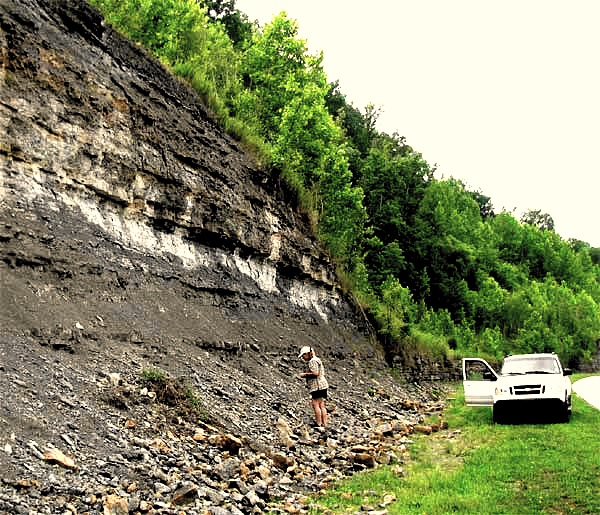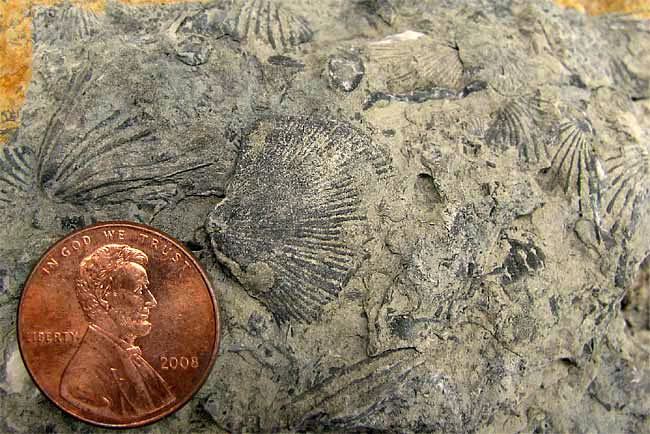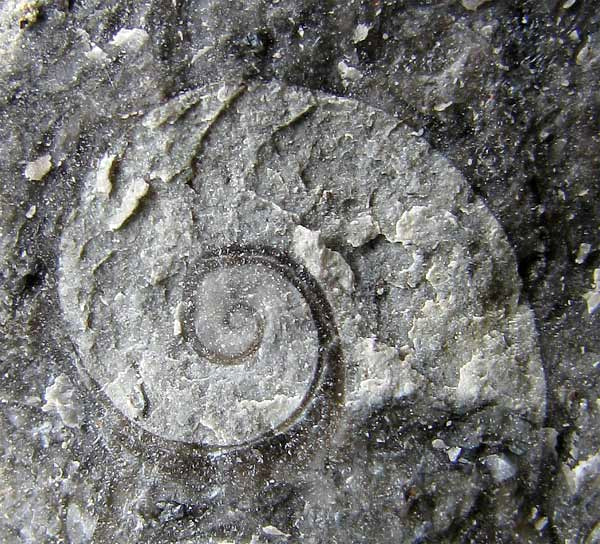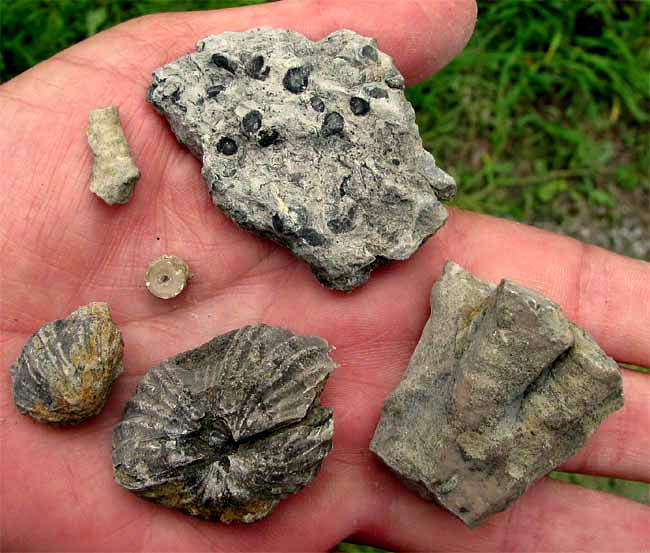Excerpts from Jim Conrad's
Naturalist Newsletter

from the July 13, 2008 Newsletter, an on-the-road issue uploaded from Semiway, McLean County, Kentucky, USA
AT A ROADCUT IN CENTRAL TENNESSEE
In central Tennessee on our third day out we were in hilly country beholding something you don't see in southwestern Mississippi -- roadcuts exposing massive, horizontal layers of rock. In general, in southern Mississippi the geology is so recent, or young, that ground material consists of much dust, sand and gravel, but it hasn't had time to solidify into layers of hard rock.
The Peterson Field Guide "Geology of Eastern North America" indicated that exposed bedrock in our central Tennessee area was deposited either during the Ordovician Period or the Mississippian Epoch of the Carboniferous Period -- we were in the transition zone -- so ground material there definitely had had time to consolidate into rock. The rocks in our central Tennessee roadcut were between 488 and 299 million years old. Most roadcuts around Natchez cut through wind-deposited dust, or loess, from the last Ice Age, which was deposited only 18 to 25 THOUSAND years ago. You can see our roadcut's horizontal layers of bedrock, with Karen looking for fossils, above.
Finding fossils was our main goal. The Trace is Federal parkland so we couldn't carry fossils away, but we could see what was there, and take pictures. Some of the rock layers were very fossiliferous -- in fact consisting almost entirely of small, cemented-together, clamlike fossils, as you can see below:

Our Holt Guide to Minerals, Rocks and Fossils divides clamlike fossils into two big groups: BIVALVES, of which oysters, mussels and clams are living examples, and; BRACHIOPODS, most kinds of which have long been extinct. The top and bottom shells, or valves, of Bivalves are generally mirror images of one another, and the back connecting parts are usually bent toward one side. In contrast, a brachiopod's top valve is generally different in size and shape from the lower one, but the two valves are bilaterally symmetrical. Thus the fossils in the above picture appear to be brachiopods.
Though it's always special to hold fossils of plants and animals that lived millions of years ago, at this roadcut we didn't find anything really spectacular. However, I did find an elegant, thumbnail-size, snail-like gastropod form, shown below:

Karen shows off her favorite finds from that day below:

If this has piqued your interest in fossil hunting, you might check out my fossil page, with several links to websites that can help you identify your finds, at https://www.backyardnature.net/g/fossils.htm.
An annotated timeline of the Earth's geological history, the Geological Time Scale, is at https://www.backyardnature.net/g/geo-time.htm.